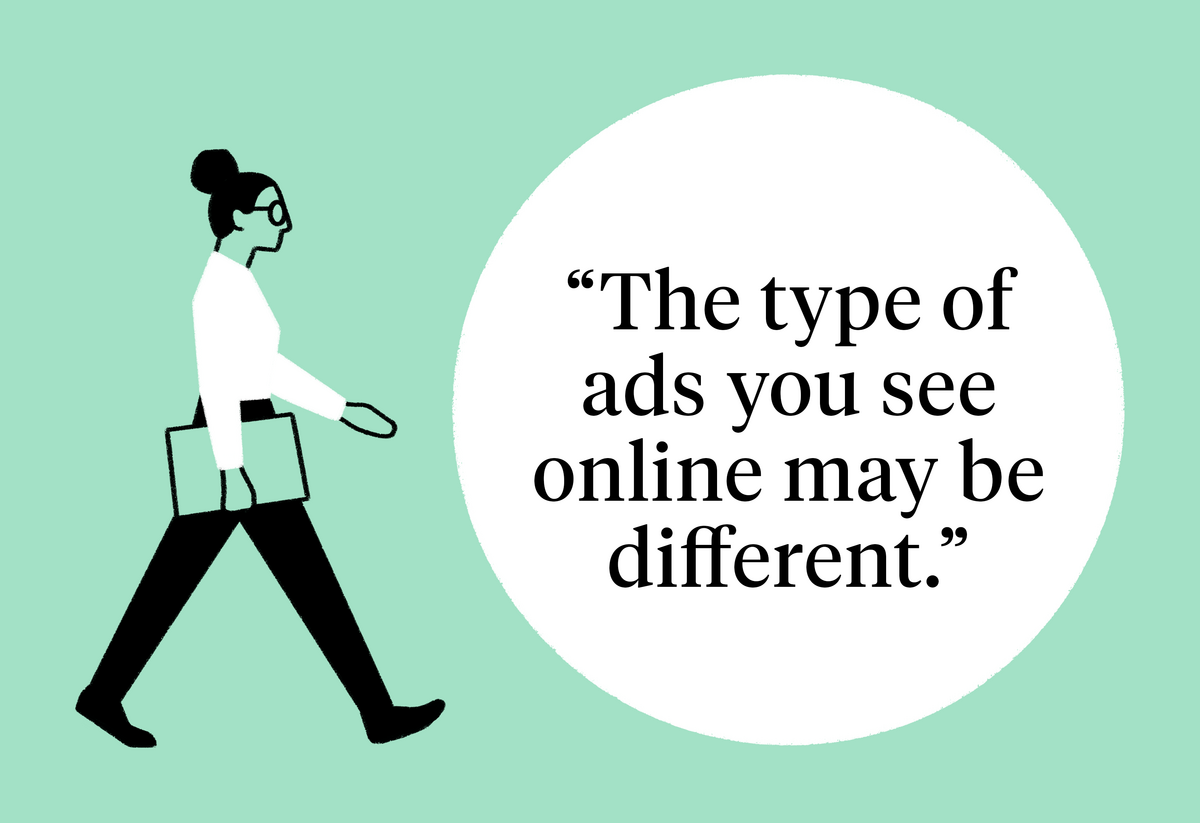Marketing Leadership Oct 14, 2024
Podcast: Third-Party Cookies Are Crumbling. What’s a Marketer to Do?
New rules are making it harder to track customers’ online behaviors. On this episode of The Insightful Leader, we look at what this means for companies large and small.

There’s a nonzero chance that watching five hours of corgi videos in a week will land you some very targeted ads.
It’s a reality that’s changing as browsers like Apple’s Safari and Google’s Chrome take aim at third-party cookies, which are small text files that track users across the web. Apple and Firefox-maker Mozilla already block them, while Chrome is working on a solution that lets users opt out of tracking.
On this episode of The Insightful Leader: advertisers who built their digital strategies around third-party cookies must rethink how they find and target audiences. Two marketing experts tell us how.
Podcast Transcript
Laura PAVIN: We all know what it’s like to go down an Internet rabbit hole.
[Clip from Service Dog Club]
YOUTUBER: Today we’re gonna be reviewing this water bowl. For me, this is a life saving bowl …
[End of clip from Service Dog Club]
PAVIN: Maybe you’re searching for a new water bowl for your pet corgi or a tent for that camping trip you’ve been planning.
[Clip from Outdoor Boys]
YOUTUBER: Hey, welcome to the ultimate tent review video. We have 13 tents here of every shape, size, and price range, and color, and we’re gonna walk you through how to pick the right tent for you.
[End of clip from Outdoor Boys]
PAVIN: Soon, digital ads for camping gear and corgi-themed dog accessories start popping up all over your social-media feed and other sites too. If you’re like me, maybe you find this kind of annoying. Maybe even a little creepy. What’s going on exactly?
The technology that can make it feel like the Internet knows us a little too well—it was built on something called cookies. Those cookies make it possible for sites to track and store information about us as we hopscotch around the web, from the random items in our online shopping carts, to the music we stream, even where we live. For decades, this cookie technology has helped companies to be really targeted in reaching consumers. Fast forward to today where the Internet has gotten good at using data tracking to predict our tastes and preferences. This includes our favorite streaming platforms.
Guy ARIDOR: when you go and watch Netflix, there’s an extraordinary amount of movies on the platform, right? And one of the strengths of Netflix for the past decade has been, “Hey, they can actually use your past listening history to accurately predict which things you might like.”
PAVIN: That’s Guy Aridor. He’s an assistant professor of marketing at Kellogg who’s interested in how the Internet is regulated. Lately he’s been thinking a lot about how the cookie landscape is changing … and changing fast. Between new data-privacy laws hitting the books in a bunch of countries around the world, combined with firms like Google and Apple rewriting their data-privacy policies, the old playbook that relies on using cookies to track and target consumers is now at a crossroads. So what might digital advertising look like in a cookie-less world? That’s ahead on this episode of The Insightful Leader. I’m Laura Pavin.
[Music]
PAVIN: If you were around for the early days of the Internet, then you may remember that cookies weren’t always a thing. The first Internet browsers weren’t built to track our personal information. Once we left a site, it was a closed door as far as the browser’s memory was concerned. If we had a habit of hanging out in online chat rooms with other Corgi lovers, the Internet was none the wiser about that.
But then, in the 1990s, one browser, Netscape, introduced a hack.
It was a browser file that made it possible for websites to collect and store information about us as we clicked from site to site. That’s when a type of cookie known as a third-party tracking cookie was born. And soon advertisers started using the data stored in those third-party cookies to build specific consumer profiles, profiles that allowed brands to target their digital ads and recommendations in really niche and specific ways. Before cookies and data tracking became mainstream, brands had to broadcast their messaging to a wider group, which was more expensive and also could be hit or miss. Here’s Kellogg professor Guy Aridor again.
ARIDOR: The main sort of novelty of a lot of advertising online relative to, for instance, advertising on cable TV was that I have at least a decent sense for who I’m advertising to and I can potentially pay to only advertise to the people that I think I should care about.
PAVIN: While third-party-tracking cookies would go on to transform digital advertising, they also raised thorny questions about data privacy and who was actually benefiting from how our information was being stored and shared with firms.
ARIDOR: The main tension in the privacy space is thinking through what’s the value of data for firms and what’s the value of data to consumers and how can we think about regulation that kind of tries to balance that?
PAVIN: When it came to regulation, up until recently, it was pretty common for consumers to have to proactively opt out of data tracking. In other words, having sites collect and track our data was the default option. But now, in part because of a newer set of laws that started in Europe, the script on data tracking is being flipped.
ARIDOR: You know, if you go to Europe, one of the components of this is, when you go to a website, there’s these popups that say, “Hey, this website’s using this kind of data to track you. Do you allow it or deny it?” Right. And the typical thing that happens when you hit “deny” is that these third-party cookies can’t get sent.
Right so it kind of moved from this opt-out framework to this opt-in framework where now it’s like, it’s actually not, you don’t have to go through some crazy amounts of things to stop data tracking. But now every time you go to a website, it’s going to ask you, “Do you want to do this or not?”
PAVIN: In the wake of data-privacy laws changing in Europe and other countries, over the last few years companies like Google and Apple started rewriting their data-privacy policies, including announcing plans to phase out third-party tracking cookies altogether.
Aridor says that for global companies that have a footprint in Europe, including the Googles of the world, it was easier to change data-privacy rules across the board.
ARRIDOR: Dealing with this patchwork of regulation is incredibly hard. So a firm like Google at big costs can have a separate website that sort of functions under Europe’s data privacy constraints versus in the U.S., but this is a very costly thing to do. And so there is this effect that people found in the academic literature. They termed it the Brussels effect, I think was the word, which was basically kind of in response to all this privacy regulation in the EU. Especially smaller firms in the U.S. had just ended up adopting the regulation because they were like, “If we want to serve firms and customers in Europe and in the U.S., it’s going to be really costly to have two separate websites for each of these things, two separate data pipelines. We’re just going to go with whatever the strictest thing is and kind of stick to that.”
PAVIN: In that vein, Google recently announced plans to let Chrome users opt out of third-party cookies. And experts think most consumers will take them up on that. That means companies will likely have to start thinking about using an alternative tool Google developed that threads the needle of maintaining some threshold of data privacy for individual users while also giving companies a way to do targeted advertising. It’s called the “privacy sandbox.” The idea is that consumers’ data won’t leave their browsers. Instead, Google will cluster people into different interest profiles based on their browsing history.
ARIDOR: And then the only thing that gets shared is not kind of this raw data that’s passing between all this advertising networks, but just the Google Chrome browser says, “This is a guy that buys Nike shoes. So if you were looking to target people that buy Nike shoes, you should target this guy.” Right. And so that’s not without loss, so it’s not going to be as clean because you’re losing some potential nuance there. But the argument is that that’s going to be doing a good-enough job of targeting. That it’s not going to have a dramatic impact on the advertising ecosystem.
PAVIN: So what do all of these changes add up to? Let’s start with what they could mean for businesses.
Guy Aridor thinks that it’s actually smaller retailers that may have to adapt the most. That’s because bigger firms like Amazon or Nike or Walmart can keep using something called first-party cookies that track what we do within the confines of their sites. Those cookies aren’t going away with these new rules. But for smaller mom-and-pop businesses, it’s probably going to be a lot more difficult and also more expensive to reach new customers with the kind of precise targeting they’ve been able to do in the past.
ARIDOR: There’s no way your mom-and-pop shoe store is going to be able to find ... has a big-enough database of customers that if they wanted to target anyone in Chicago that’s interested in shoes, they’re going to be able to do that in-house. But a big brand like Nike that has a lot of hits on their website may actually be able to be okay as we move to the status quo.
PAVIN: So what about what these changes could mean for consumers? Professor Aridor thinks that we probably won’t notice a night-and-day difference—at least not at first.
ARIDOR: I think the kind of changes will be in the medium-to-longer term, which is that the type of ads you see online may be different. They may be less targeted; there may be more of them. If they work less, we know that firms may make their ads more obtrusive or increase their ad load, so you may see more ads online. Conversely, you may have to worry a little bit less about which things are being collected about you because these things aren’t going to be directly always transferred to firms. And so, things like the privacy sandbox will make it so that it’s less likely that your data is used for non-obvious purposes because you’re allowing it to be used to just tell people that you like corgis or you like Nike shoes—and not like, “He spent 30 hours looking at corgi videos in the past couple days,” and this information leaking out kind of, it’s being aggregated to, “He likes corgis a lot.”
PAVIN: I think I’d prefer companies to know that I simply like corgis without knowing the details of my watching habits. Sidebar: Corgi content is … really something.
[Clip from VlogAfterCollege]
YOUTUBER: Welcome to Christmas cooking with Corgi! Today, Gatsby’s gonna help us cook some Christmas meals for brunch, dinner, and desert. We’re gonna be making some food that is either dog friendly or make a human portion and a dog-friendly portion. For breakfast, we are going to be making a dog-friendly frittata. We’re going to make it with some broccoli. I know Gatsby loves broccoli.…
[End clip from VlogAfterCollege]
PAVIN: So how might a mom-and-pop business that for instance caters to the corgi lovers of the world adapt in this digital-advertising landscape when third-party-tracking cookies go away? We reached out to Kelly Cutler for her take. Cutler teaches integrated marketing at the Medill School of Journalism at Northwestern,and she also works with business professionals through Kellogg’s Executive Education Programs. For her part, Cutler has never been a big fan of using third-party data to target customers. Instead, she says she’s a proponent of something called zero-party data.
Kelly CUTLER: So zero-party data is this idea that we’re sort of entering into an agreement together that says, “I’m going to provide you with something of value, and in exchange for that, you’re going to give me some of your personal information.” And for every company, that might look a little bit different. But you still want, as a marketer, you still want to create a way for those customers to find you. And so if you’re not doing that, using display ads or social-media ads that are potentially based on third-party cookies, you want to start looking at alternatives to that.
PAVIN: For instance, alternatives that give people a reason to voluntarily share their personal information. Incentives could include offering a discount for signing up for a company’s email newsletter, or referring a friend in exchange for some perk.
CUTLER: Uber and Airbnb are the masters at this game, which is, refer a friend and you get a free ride or you get a free night stay or those types of things. And The friend has to say, “I want to enter into this discussion.” And so that’s a way to start to build those bridges, looking at more-authentic ways to connect with customers where they feel comfortable that they understand what that relationship looks like, rather than being barraged with messaging that they didn’t ask for and they didn’t necessarily want to get.
PAVIN: Cutler thinks that this back-to-basics approach—one that’s built on meaningful connections and consumers choosing to engage with brands—is just good marketing, plain and simple.
CUTLER: I think that it’s sort of incumbent on the marketers to figure out a new, fresh approach to digital marketing. And we’re seeing that companies are going to have to react in ways that are a little bit harder. It requires rolling up your sleeves more, rather than just blasting out ads and finding people that way. It’s more-authentic connections through things like email and surveys and quizzes and forms and really high-quality content and assets that are being offered in exchange for information.
PAVIN: Now if you’re a small-business owner listening to this and you’re thinking, I don’t have a lot of time to figure this out let alone the resources to spend money on a cookie-less digital-marketing strategy …
Here are a few first steps Cutler says you can take.
Step one: you’re probably already using social-media platforms like LinkedIn, Facebook, and Instagram to promote your business. Well, you can also use those platforms to gather intelligence and analytics about your prospective customers. Cutler recommends using quizzes and polls. These features are built into a lot of social-media platforms these days.
Step two: Cutler says that email marketing can be the best—and easiest way—for small businesses to connect with customers. Newsletters, email blasts, and subscriptions are powerful tools for sharing information with your customers and building meaningful connections. And they’re a way for you to gather information about your customers too.
Step three: consider doubling down on your content-marketing efforts. If you’re already offering ebooks, webinars, podcasts, short videos ..., spend additional time and resources making those things even more compelling for your audience. Short-form videos and audio, in particular, are good ways to gain a new target audience, and they create stickiness for those meaningful connections. Yes, that sounds labor-intenstive, and it is. But, luckily, AI is at the point where you can streamline some of that process. It can help you with things like language translation, captions and transcriptions, and even text-to-video or text-to-audio production.
Still, Cutler gets that all of this stuff can be a lot to get your arms—and head—around. But she says that shouldn’t stop you from giving it a try.
CUTLER: So I would say that while it’s intimidating, there are a lot of resources out there. There’s this opportunity for brands to do a good job at expanding what they’re offering and those connections that they’re building in exchange for the information that we’re sharing. And in a lot of cases, we’re already doing that. I mentioned Airbnb and Uber as examples. There are so many examples like that. You know Most people are engaging with certain companies on a fairly deep and regular basis. So that just continues to expand and grow, and the brands that do it right will survive and thrive, hopefully. And the ones that don’t, they’ll suffer some consequences.
PAVIN: Adaptability is key for businesses that want to thrive in this new cookie-less landscape. That’s especially true for niche brands that exist because of third-party cookies—like, say, a company that makes products for corgis.
The point is that consumers who think corgi butts are cute—they’re still there! You’ll just have to engage them differently. And Cutler’s steps are a good starting point for finding your footing.
[Music - PARTY CORGI]
[CREDITS]
PAVIN: This episode of The Insightful Leader was written by Nancy Rosenbaum and edited by Laura Pavin and Jess Love. It was produced by the Kellogg Insight team, which also includes Fred Schmalz, Abraham Kim, Maja Kos, and Blake Goble. It was mixed by Nancy Rosenbaum. Special thanks to Guy Aridor and Kelly Cutler. As a reminder, you can find us on iTunes, Spotify, or our website. If you like this show, please leave us a review or rating. That helps new listeners find us.


